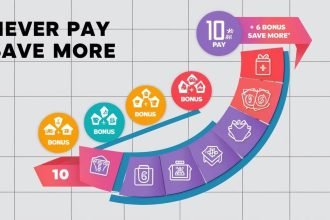Despite the stock’s recovery from its 2022 lows, Royal Bank of Canada (TSX:RY) shareholders are debating whether or not to reinvest their TFSA and RRSP funds in the company.
Despite economic difficulties, Royal Bank has posted good profits for both the fourth quarter and fiscal year 2023. With a wide range of income sources and locations, the more than 175-year-old bank has maintained strong performance. Rising provisions for credit losses and falling return on equity, however, continue to be obstacles.
In order to ascertain whether RY is still priced affordably for buy-and-hold investors with a long-term perspective, let’s examine its operations, most recent earnings, dividend growth, and valuation in greater detail.
Sprawling Operations Fueling RY’s Growth
With a market capitalization of around $175 billion, Royal Bank is one of the largest banks in Canada and one of the top ten worldwide. Retail, commercial, capital markets, investor, treasury, and insurance are all sources of income for the Toronto-based bank.
Most of the bank’s revenue comes from inside the country, where it is well-positioned for further growth. Assuming all necessary permissions are met, Royal Bank has agreed to acquire HSBC Canada for $13.5 billion. After the acquisition, RY will likely dominate the Canadian banking industry.
In 2022, Royal Bank acquired Brewin Dolphin for $2.4 billion, increasing its global wealth management footprint.
In 2015, it paid $5 billion to purchase City National Bank in the United States. Diversifying the Canadian market is essential, and these deals and organic expansion abroad accomplish just that.
Solid Earnings Despite Challenging Conditions
Adjusted net income for Royal Bank’s most recent fiscal year 2023 was $16.1 billion, up slightly from the previous year. Income before interest and taxes (EPS) increased 2% annually to $11.06. The return on equity, however, fell from 16.6% to 15.5% as capital cushions were built up.
The bank’s capital position is robust, with a common equity tier one ratio of 14.5 percent. This goes above and beyond the regulation minimum of 11.5% and supplies a safety net in the event of possible credit losses. But when the deal with HSBC Canada concludes, it will deplete the surplus funds.
Provisions for credit losses were increased by 89% from fiscal Q4 2022 to $720 million last quarter, as was the case with other Canadian banks. Royal Bank was no exception.
Interest rates are on the rise, making it harder for many consumers to make their payments. The overall strength of the credit remains high, and the total allowances amount to only 0.37 percent of the loans.
Attractive, Growing Dividend Yield
For the second time in a year, Royal Bank has increased its dividend, this time by 2%. Despite the gloomy forecast, the bank probably feels stable enough with its profit power to sustain modest dividend growth.
Compared to its five-year average dividend yield of less than 4%, RY’s current stock price offers a substantially higher yield of 4.4%. In addition to being a Dividend Aristocrat, the bank has paid out dividends to shareholders for more than a century.
Buying Opportunity or Value Trap?
The stock of Royal Bank has recovered more than 15% from its October lows, but it is still much lower than its top in 2022. As the economy shows signs of improvement, investors are asking whether this is a good time to purchase or a value trap before a possible downturn.
Shares of RY are trading at a relatively low 9.4 times forward earnings forecasts, which puts them near $125 per share. A P/E ratio above 11x over the past five years is significantly higher. The current value might be appealing in the long run if Royal Bank is able to keep its profitability high even when the economy is in a slump.
But central banks might keep raising rates, and Royal Bank’s varied businesses would be affected hard by a severe recession. Because of these dangers, it might be wise to proceed with caution. If prices continue to fall, investors may want to consider taking a partial stake now and adding to it gradually.
The Verdict: Royal Bank Remains a Top Pick for TFSAs and RRSPs
Investors who stayed with Royal Bank over the long haul had returns that were higher than the market average. Even if there are more dangers than ever before, RY seems like a good buy for TFSAs and RRSPs right now.
Investors, however, should be ready for persistent volatility until policymakers in charge firmly change course. Considering the road ahead is still unclear, it seems prudent to remain cautious and gradually develop a position on possible pullbacks.





